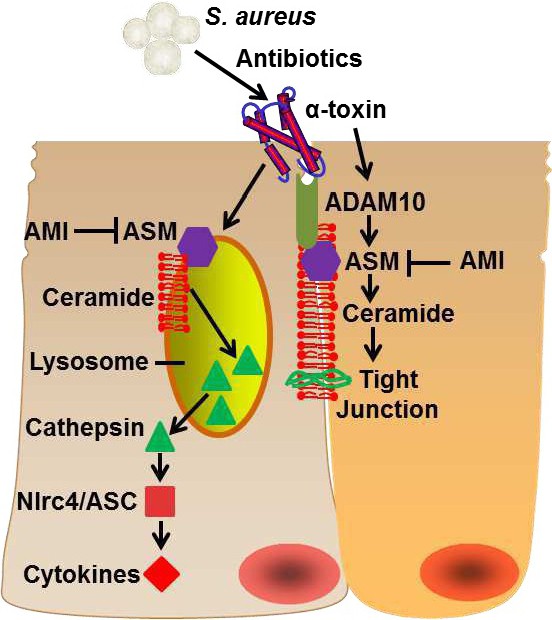Fig. 2. Interaction of S. aureus with the ASM/ceramide system. 1. Antibiotics are often insufficient to cure severe S. aureus, respectively MRSA infection. A-toxin induces the activation of ASM and the release of ceramide via ADAM10, which is linked to the degradation of tight junctions (right cell). However, the α-toxin-activated ASM/ceramide system also mediates the trafficking of cathepsins from lysosomes to the cytoplasm, followed by the formation of the Nlrc4/ASC complex and the production of inflammatory cytokines. The functional ASM inhibitor amitriptyline (AMI) can prevent tight junction degradation and cytokine release. A combination of ASM inhibitors with antibiotics provides a novel approach to treat S. aureus and MRSA infection.
